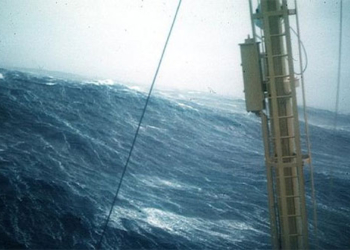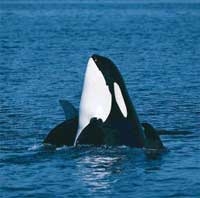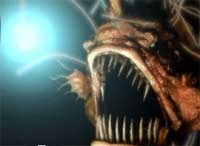Scientists have discovered a “strange forest” beneath the sea, home to many unusual creatures, including a sponge resembling the character E.T. from Steven Spielberg’s film.
One day in 2017, a team of scientists was astonished to witness a sight at an underwater volcano nearly 2.5 kilometers deep in the Pacific Ocean. They referred to what they saw as “the strange forest”, according to The Guardian.
However, this forest lacks trees; instead, it features bizarrely shaped corals. Some resemble twisted bottlebrush corals (Rhodaniridogorgia), while others take on the flattened shape of a harp coral (Narella), with branches entwined by snake stars.
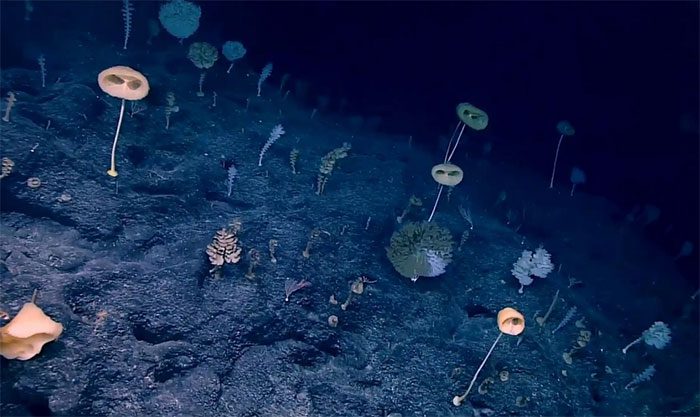
The E.T. sponge and corals that make up the area referred to by scientists as the “strange forest” deep in the Pacific Ocean. (Photo: NOAA).
Interspersed among the corals are various species of glass sponges, including Aspidoscopulia, which looks like a white, ruffled dress swaying in the current along a zigzag body.
Perhaps the most eye-catching is a species of glass sponge with a long body topped by something resembling a watermelon with two large holes, evoking the image of two eyes.
Due to its peculiar appearance, this sponge has been nicknamed “E.T. sponge” after the extraterrestrial character in the blockbuster film “E.T.” by director Steven Spielberg. In 2020, it was officially named Advhena magnifica, meaning “the magnificent extraterrestrial.”
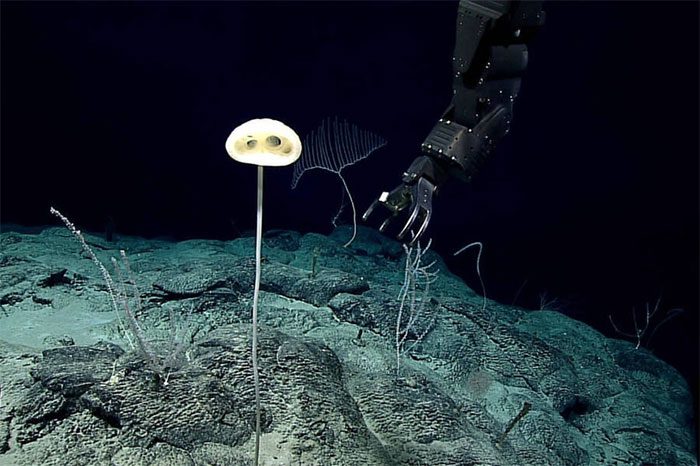
An E.T. glass sponge found nearly 2.5 km deep in the Pacific Ocean. (Photo: NOAA).
A Completely New Genus of Sponge
Despite their plant-like appearance, sponges are actually simple animals. They lack faces, brains, hearts, muscles, or any other body parts. Most of a sponge’s life is spent attached to the sea floor, feeding by filtering water to extract tiny food particles.
Before being spotted in 2017, the E.T. sponge had only been observed once, in 2016 near the Mariana Trench, thousands of miles west of the underwater volcano in the Pacific Ocean. At that time, scientists collected samples of this coral.
Upon examining the specimen, Dr. Cristiana Castello Branco at the Smithsonian National Museum of Natural History immediately recognized the unusual nature of the organism before her. “Its shape is very distinctive,” she said.
The Advhena magnifica sponge is composed of tiny structures known as spicules, made of silica. Under a microscope, Dr. Castello Branco observed that these tiny structures resemble sharp snowflakes or drooping daisies.
“I found some of the spicules among these to be very different,” Dr. Castello Branco noted. This is not just a new species but an entirely new genus of deep-sea sponge that had never been discovered before.

Scientists named the Advhena magnifica sponge after the extraterrestrial E.T. in the film of the same name by director Steven Spielberg. (Illustration: Universal Pictures).
The E.T. sponge sample that Dr. Castello Branco had was collected using the robotic arm of a deep-sea submersible, controlled via a cable connected to a ship on the surface.
This contrasts with the past, when researchers could only examine sponge samples that had been partially damaged after corals got caught in fishing nets.
According to Dr. Castello Branco, remote-controlled technology has changed the game for her work. In addition to being able to collect intact specimens, researchers like her can observe animals in their natural habitats and learn more about their lives.
Contrasting Feeding Methods
In Scientific American, writer Jennifer Frazer notes that glass sponges are inherently very strange organisms. They have little to no “cells” in the traditional sense, instead possessing a network of cytoplasmic cells filled with many nuclei.
Glass sponges may also be among the oldest animals on Earth. Some individuals may have lived for over 10,000 years, such as Monorhaphis chuni.
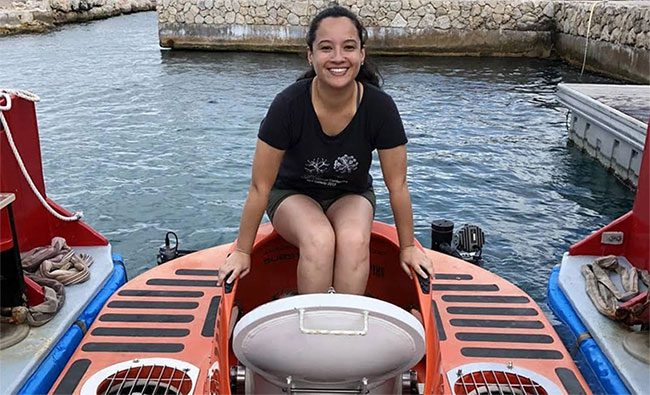
Dr. Cristiana Castello Branco. (Photo: Cristiana Castello Branco).
Footage of the strange forest beneath the Pacific Ocean shows that all E.T. sponges face the same direction. Regarding this, Dr. Castello Branco believes they may orient themselves this way to filter food as water flows past the underwater mountain ranges.
Sponges that live in shallow waters, including species commonly harvested for use in baths, typically draw seawater through tiny pores all over their bodies, filtering out food and expelling water through larger openings.
However, it is likely that E.T. sponges do not do this; instead, they may draw water through their “eyes,” which have a larger surface area. This could be a crucial survival strategy for organisms inhabiting the deep sea, where food is often scarce.
So far, the E.T. sponge has only been found in the two aforementioned locations, but Dr. Castello Branco believes this species will likely appear in other underwater mountains—places she refers to as islands of wild biodiversity.
“It’s just a matter of time,” she said. “The type of environment with sponge diversity like this is much more common than we usually think.”








































